Trinity Uniting (formerly Congregational) Church
Black Street, Brighton
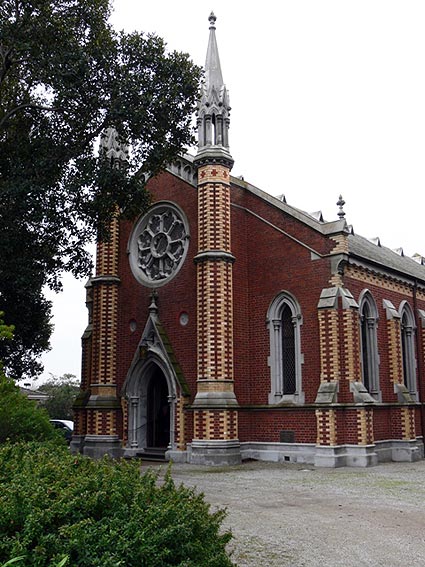
The Brighton Congregational Church was constructed in 1875 in polychrome brickwork to the design of local resident, architect Charles Webb. The main facade comprises two turrets flanking a rose window and porch. The interior includes elaborately stencilled walls, kauri pews and stained glass by Ferguson & Urie.
The present organ was built in 1884 by George Fincham at a cost of £420 and remains in an exceptional state of originality. It is located within the apse, with an extended mechanical action console placed before the later pulpit. The three-tower kauri casework containing attractively stencilled pipes is notable. The restoration by the South Island Organ Company Limited, completed in 1996, saw the removal of varnish from the casework and console, and the complete and sensitive refurbishment of the action, wind system and pipework.

The specification, unaltered from the original. is:
| GREAT Open Dia Stop Dia Clarabel Dulciana Principal Flute Twelfth Fifteenth Swell to Great SWELL Bourdon Open Dia Stop Dia Keraulopn Gemshorn Piccolo Oboe Tremulant PEDAL Bourdon Great to Pedal Swell to Pedal |
8 8 8 8 4 4 3 2 16 8 8 8 4 2 8 16 |
CC-BB TC gvd.bass (operated by trigger pedal) |
Compass: 56/30
3 composition pedals to Great
2 composition pedals to Swell
Lever swell pedal
Mechanical action
The original contract has been preserved by the church and reads as follows:
The Organ to be of the best (well seasoned) materials and workmanship.
The Bellows to have Double Feeders, Inverted Ribs, Double Leathered and of ample capacity.
The Sound-board, Tables, Slides and Upper Boards to be of fine Old Cedar and Brisbane Pine.
The Backfalls and Squares to be of Cedar and Brisbane Pine.
The Composition Pedals to be of Wrought Iron and Hard Wood.
The Rollers to be of Wood, all Studs to be bushed to ensure silence in operation.
All Heavy Movements to be of Wrought Iron and Hard Wood.
The swell to have the improved Venetian Shutters, the Box to be Double Lined, the space between the inner and outer linings being well packed with sawdust.
The Jambs, Music Rack and Key fittings to be of B I Pine French polished.
The Keys to be over hanging and of fine Ivory and Ebony.
The Pedal Board to be Radiating and Concave.
The Draw Knobs to be of Blackwood with Engraved Registers and bushed with scarlet cloth.
The Wood Pipes to be made of well seasoned pine.
The Metal Pipes to be composed of a good mixture of Pure Tin and Lead.
The pipes to be of good scale, the voicing to be adapted to the Building, with pure and mellow tone.
The entire workmanship to be carefully executed.
The Organ to be built in Chamber behind Pulpit.
Keyboards to be placed in front of Pulpit.
The Case to be of Pine stained and varnished, open front similar to "Kyneton".
The front pipes to be illuminated in Colours and Gold.
This Organ to be guaranteed for five years and kept in good order and tune for the First Year without a fee.
Labour required in moving old Organ to Melbourne or suburbs to be given.
Victorian Churches: their origins, their story & their architecture, edited by Miles Lewis. East Melbourne; National Trust of Australia (Victoria), 1991, p.59
E.N. Matthews, Colonial Organs and Organbuilders. Carlton: Melbourne University Press, 1969, p. 122
'Restorations : Trinity Uniting Church, Brighton, Victoria', OHTA News, vol 20, no 3 (July 1996), pp.11-12
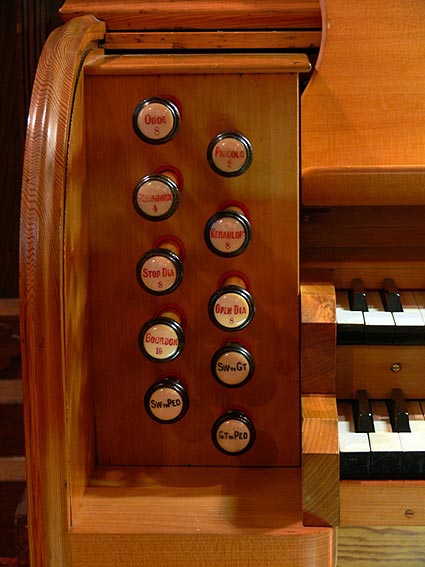 |
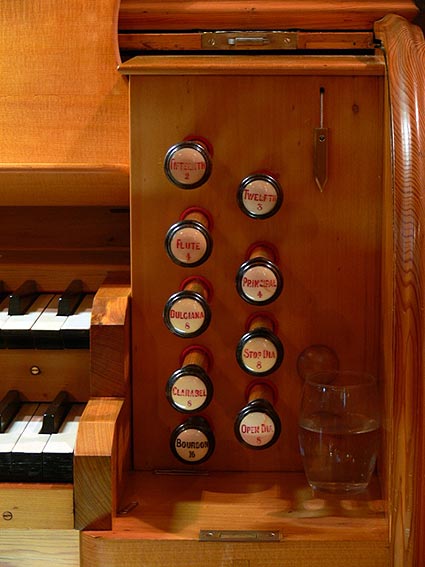 |
|
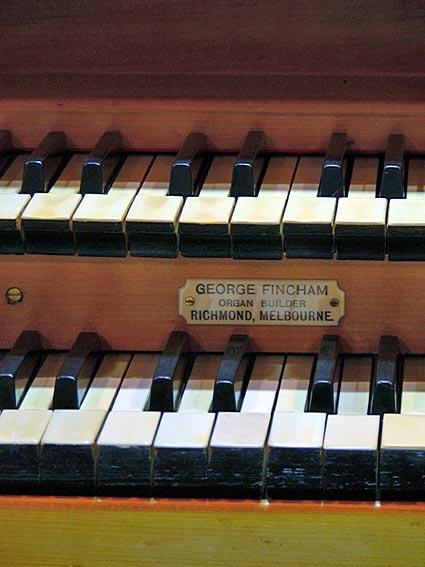 |
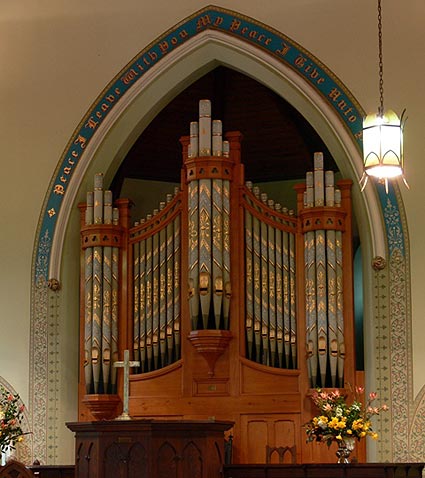 |
|
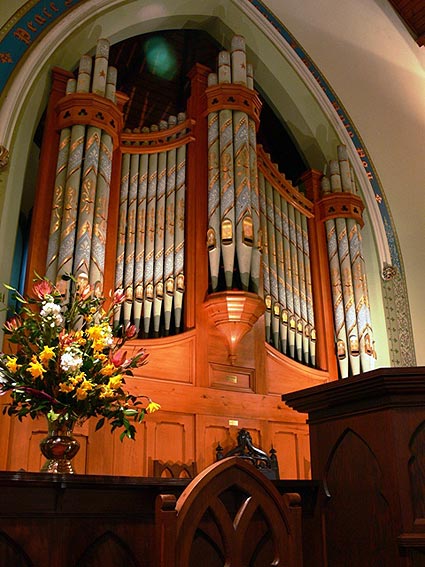 |
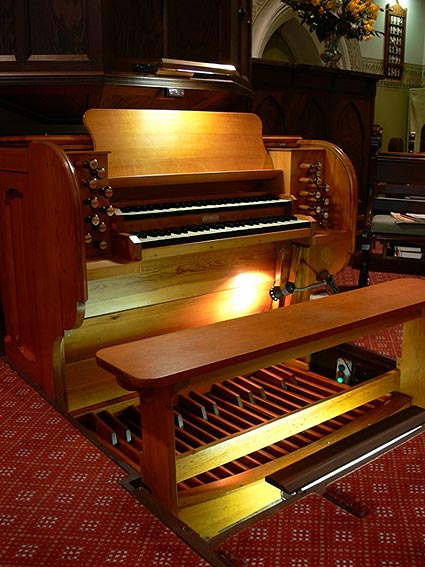 |
|
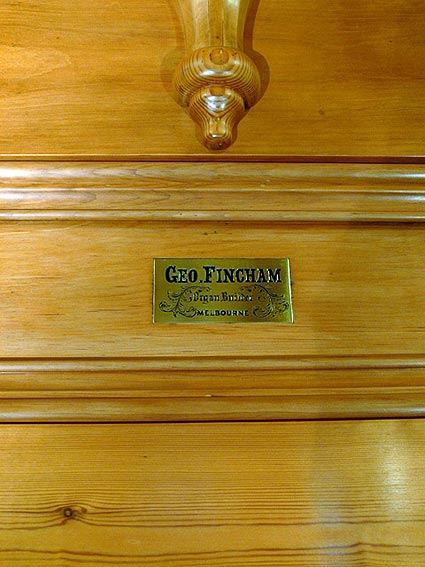 |
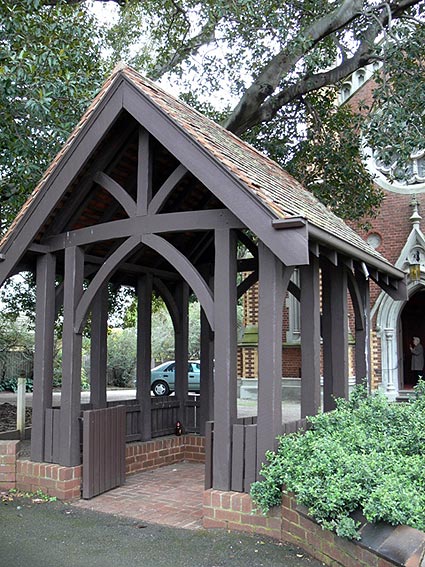 |
Photos: JRM 2006